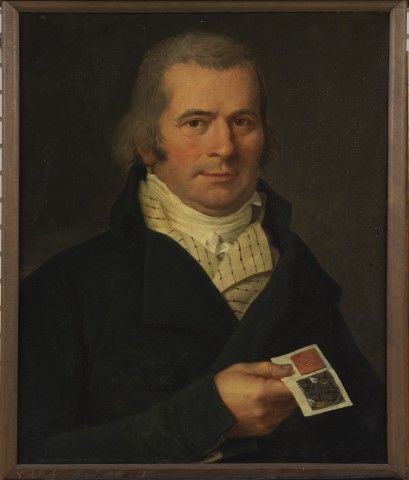
Following the first abolition of slavery during the French Revolution, some industrialists in Rouen put pressure on the public authorities so as not to dismantle the economic system that was in place. One such industrialist was Barbet, owner of a factory in Déville-lès-Rouen and of a private mansion in Rouen’s Merchants’ Quarter.
DESORIA, Jean-Baptiste François (1758-1832)
Portrait of Jacques-Juste-Bonaventure Barbet, Rouen industrialist holding a sample of cotton fabric
Rouen, 1804
Oil on canvas
Rouen, Musée des Beaux-Arts - RMM, inv. X.161
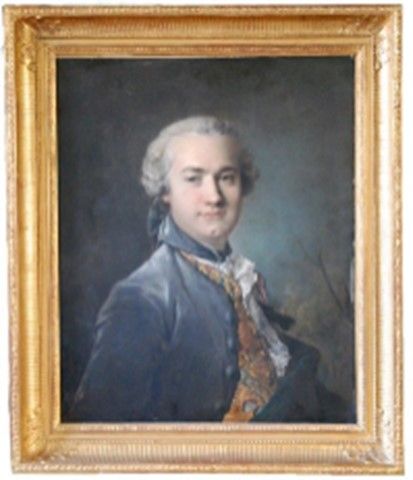
An aristocrat who acquired his position as Councilor-Secretary to the King, House and Crown of France in 1753, Antoine IV Le Couteulx de Verclives (1722-1810) belonged to a branch of merchants in the family of Paris and Cadiz, as well as being part of a line of political positions (his father was a judge-consul in Rouen). He was Second Consul of Rouen in 1752, then trustee of the Province of Normandy Chamber of Commerce in 1767, 1782, 1789, while also being Mayor of Rouen from 1774 to 1776. In 1783, he acquired the town house at 34 rue aux Ours, then in 1786 the Château de Verclives (Eure), formerly owned by the Vieilsmaisons family.
TOCQUE Louis (1686-1772)
Portrait of Antoine IV Le Couteulx de Verclives
Rouen, late 18th century
Oil on canvas
Le Havre, Maison de l’Armateur, inv. 2019.5.1

Pierre-Prosper Pimont (born in Rouen in 1797) was the son of a Norman industrialist who specialized in fabric dyeing. He joined the Rouen Académie des Sciences, Belles-Lettres et Arts at the age of 35. To mark the occasion, he gave a reception speech on “The History of Industry in France from Charlemagne to the present day”. An active member of Normandy’s learned societies, he focused his research on the economy of fuels in industry (coal and peat) – his proposals were rewarded with a silver medal at the Universal Exhibition of 1867 – and distinguished himself through his research work to improve dyeing techniques. In 1872, he finally became the President of the Academy of Rouen. At the same time, this “industrial scientist” was a judge in the commercial court, administrator of hospices, correspondent of the Mulhouse Society and vice-consul of Austria.
DELACLUZE, Jean-Edme (1778 - ca. 1858)
Portrait of Prosper Pimont (1797–1876), Indian producer
Rouen, ca. 1830
Watercolor and gouache on ivory
Rouen, Musée des Beaux-arts, Département des Arts Graphiques, inv. AG.1901.7.1
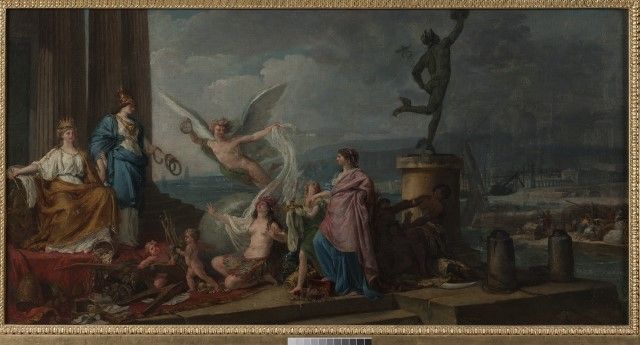
The son of Rouen merchants, Lemonnier was commissioned by the city’s consuls to paint a first canvas commemorating Louis XVI’s visit to Rouen in 1786, followed by a second, the Spirit of Trade (Esprit du Commerce), completed in 1792. Using the traditional allegory of the four continents, Europe, sovereign, is enthroned and receives the homage of Asia adorned with its treasures – some of which evoke its ancient civilization – while America, a young and still half-unknown continent, implores the protection of the Old World. At the antipodes of civilized Europe, Africa pushes back its children, whom it knows are condemned to slavery, against a backdrop of a port teeming with ships and merchants.
LEMONNIER, Anicet Charles Gabriel (1743-1824)
The Spirit of Trade,
Rouen, 1787,
Oil on canvas
Rouen, Musée des Beaux-Arts, 1911.4.1
.jpg)
Gabriel Salomon Raba was a Portuguese Jew born in Bragança in 1741. Together with his seven brothers, he founded a trading company in Bordeaux in 1763, from which they made their fortune. The following year, Raba moved to Saint-Domingue, where he remained until 1777. The nickname “The American” was commonly used to refer to planters.
Unknown
Portrait of Gabriel Henriques Raba (1741 - 1820), known as “The Consul” or “The American”
Late 18th century Oil on canvas, 98 x 79 cm
Bordeaux, Musée d’Aquitaine, Raba Collection, Accession No. 2013.9.4

Catherine Baour was the sister of shipowner Jean Louis Baour. Her marriage to merchant Pierre Balguerie exemplifies the matrimonial strategies and collusion of interests of the big Bordeaux merchant dynasties. A joint slave-trading expedition was likely sent out by the two families in 1791.
Unknown
Portrait of Catherine Baour (1747 - 1793)
c. 1770 Pastel, 57 x 47 cm
Bordeaux, Musée d;Aquitaine, Duret Collection, Accession No. 2008.8.2
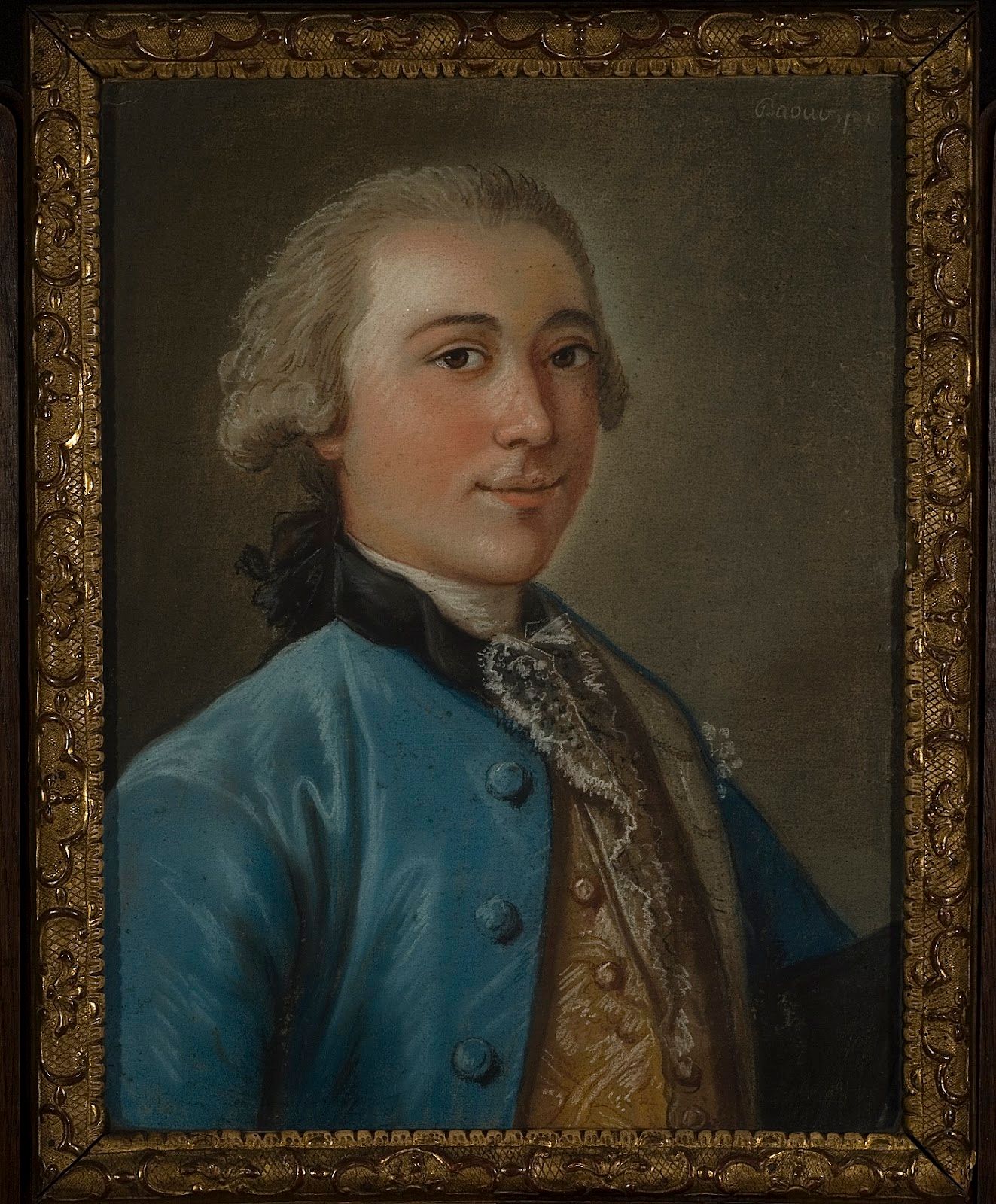
Jean Louis Baour I, known as Alexis, was heir to “Comptoir Baour”, founded in Bordeaux in 1715. This prosperous shipping and trading company developed important trade links with Saint-Domingue, South America, and the Indian Ocean. Between 1785 and 1792, “Comptoir Baour” sent out six ships from Bordeaux.
Unknown
Portrait of Jean Louis Baour I, known as Alexis (1750 - 1830)
1764 Pastel, 58 x 45 cm
Bordeaux, Musée d’Aquitaine, Duret Collection, Accession No. 2008.8.1
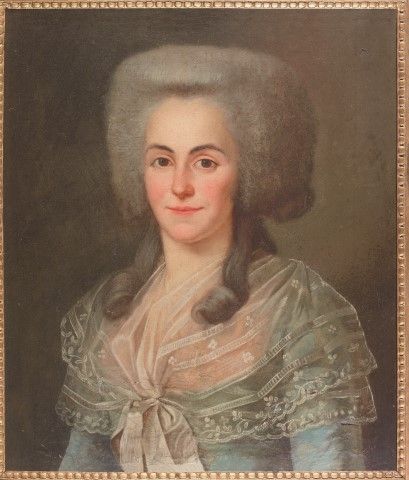
SELLES, Pierre Nicolas (1751-1831),
portrait de Marie-Magdeleine Lacoudrais, née Lecarpentier, épouse de Joseph-Armand Coudre-Lacoudrais,
fin du 18e siècle,
huile sur toile, 54 x 48,7 cm,
Musée de la Marine, Honfleur, inv.48.81,
don Albert Dubourg, 1946
© Illustria
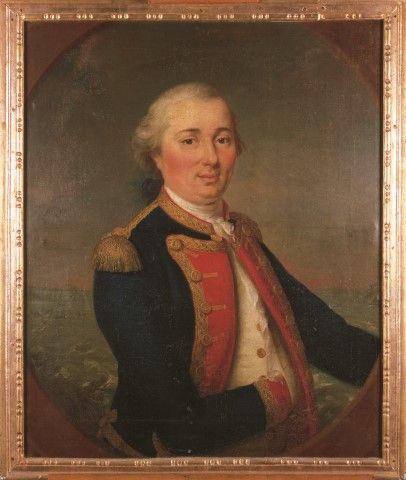
SELLES, Pierre Nicolas (1751-1831),
attribué à Portrait de Joseph-Armand Coudre-Lacoudrais (1751-1789),
fin du 18e siècle,
huile sur toile, 82 x 69 cm,
Musée de la Marine, Honfleur, inv.48.81,
don Albert Dubourg, 1946,
© Illustria
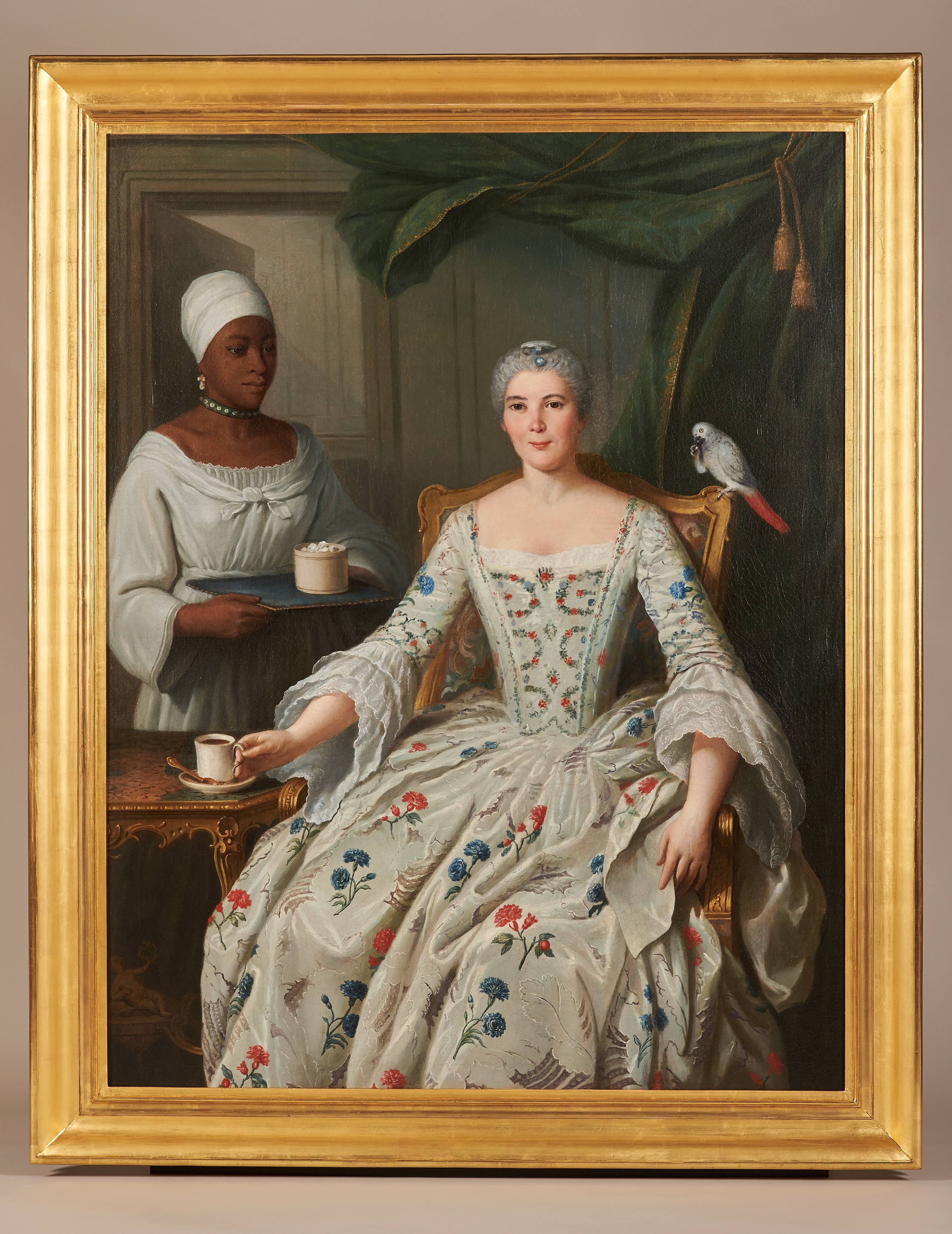
MORLOT Pierre-Bernard, 1753 Marguerite Deurbroucq et une femme vivant en esclavage à Nantes [Marguerite Deurbroucq and an enslaved woman in Nantes] Château des ducs de Bretagne – Musée d’histoire de Nantes Crédit photo : ©André Bocquel
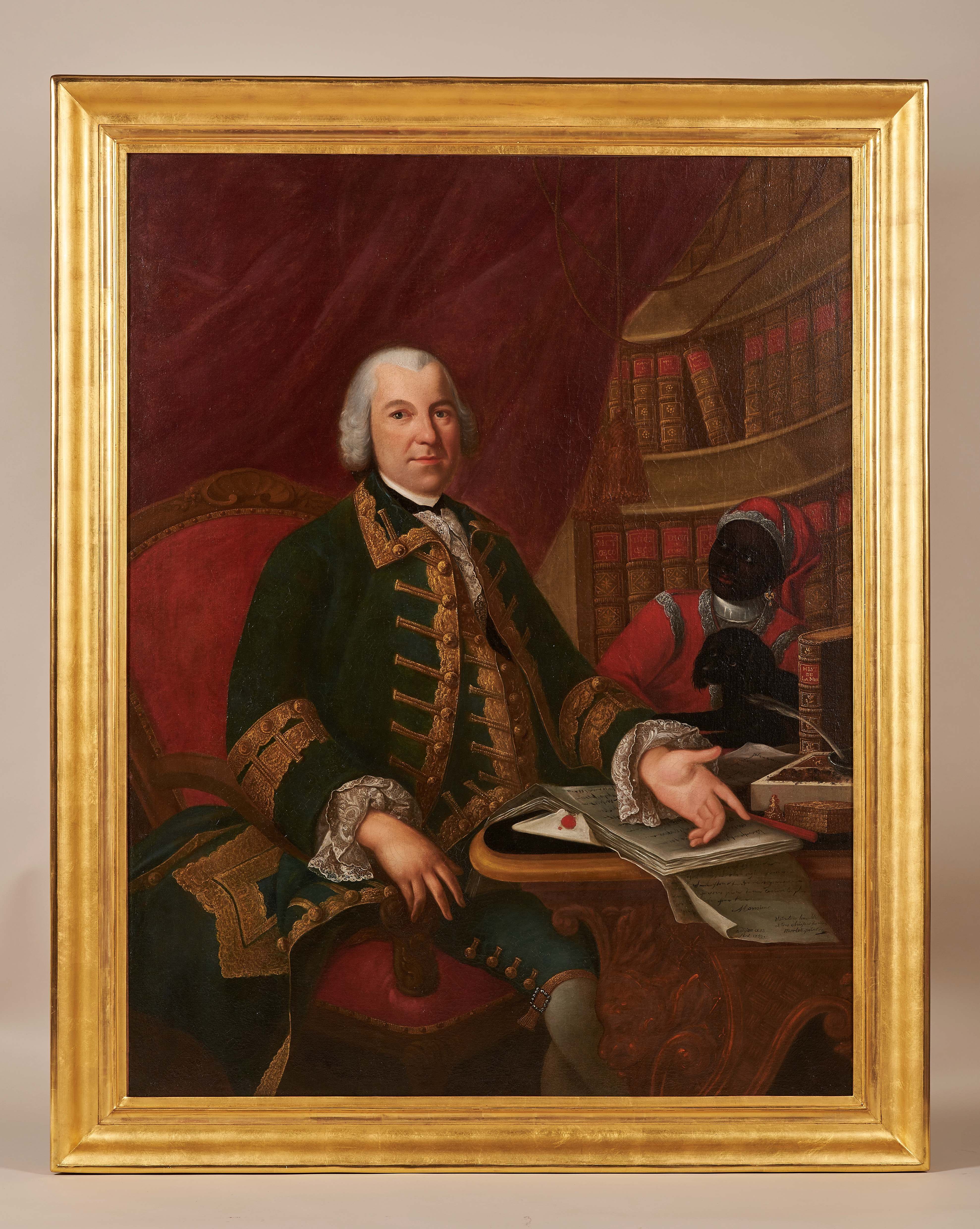
MORLOT Pierre-Bernard, 1753 Dominique Deurbroucq et un jeune garçon vivant en esclavage à Nantes [Dominique Deurbroucq and an enslaved young boy in Nantes] Château des ducs de Bretagne – Musée d’histoire de Nantes Crédit photo : ©André Bocquel
The paintings of Dominique Deurbroucq and his wife - born Marguerite Sengstack - by Pierre-Bernard Morlot in 1753 are quite remarkable because of their representation of an enslaved man and a woman in Nantes. Although the models have not yet been identified, they bear witness to the reality of people living in servitude on French soil at that time despite the ordinance of 1315.
Notice : © Château des ducs de Bretagne – Musée d’histoire de Nantes
1753
Oil on canva, 162.6 x 131.1 cm
Château des Ducs de Bretagne - Musée d’Histoire de Nantes, INV 2015.5.2 and 2015.5.2
Purchase supported by the FRAM